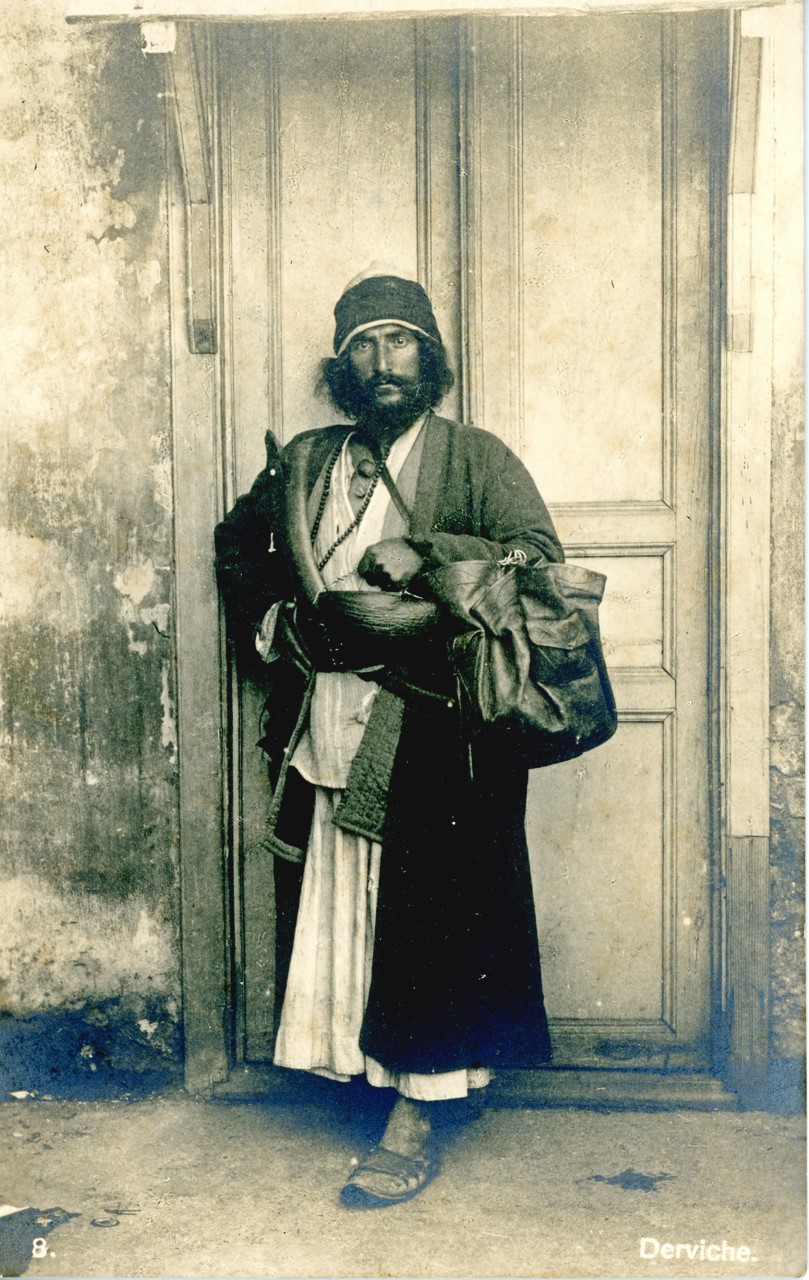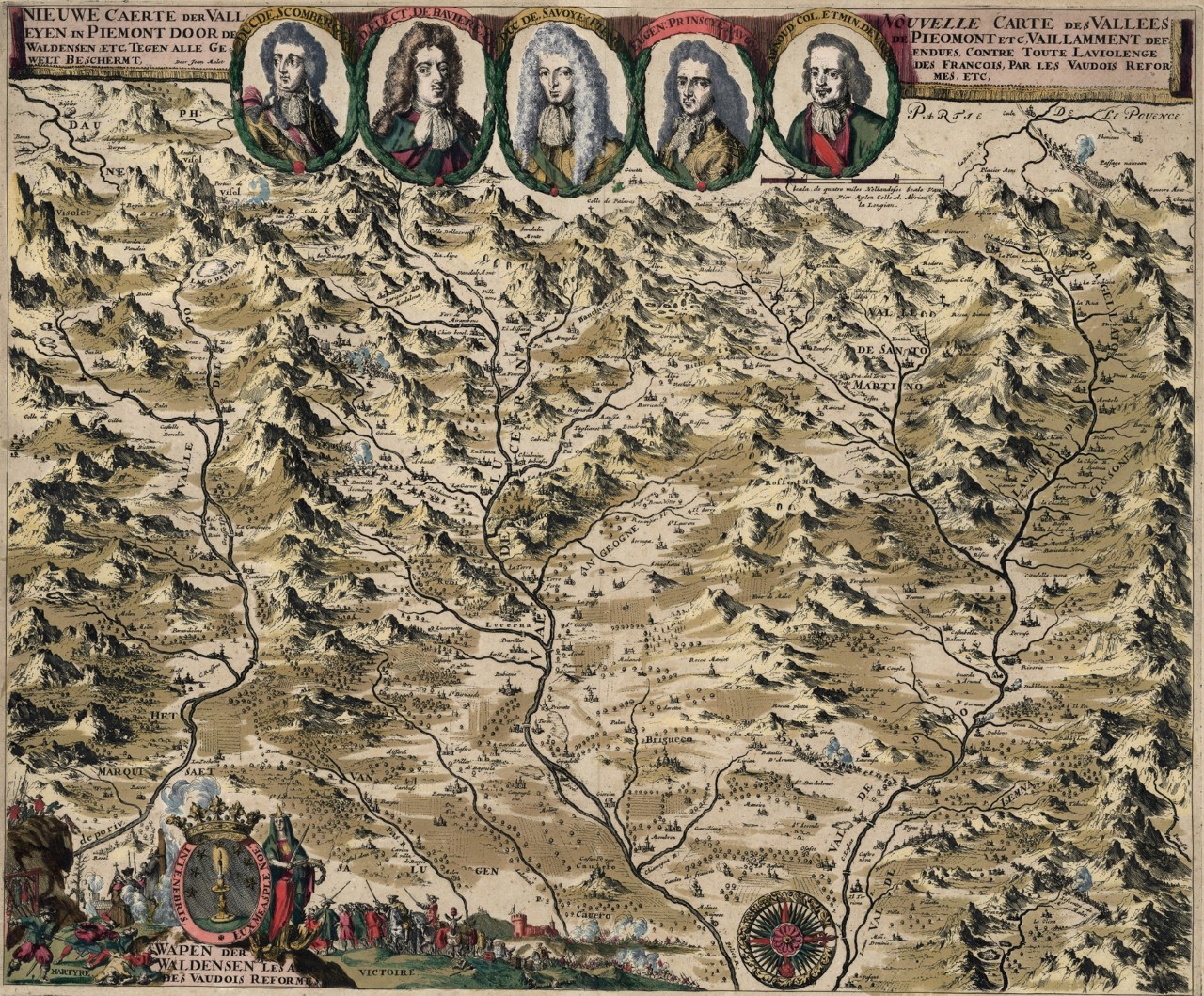Andreas Isler, Wandering Images: A Dervish and his Garb
A man stands in front of a door and looks the observer directly and intensely in the eyes. Under a tight-fitting cap, long dark hair and a beard can be seen framing his serious-looking face. He wears several layers of clothing under a dark coat, jewellery around his neck and several implements typical of his profession or, in other words, of the image he is supposed to give: a large leather bag, a vessel made of half a sea coconut from the Seychelles or coco-de-mer with a carrying chain, a curved signalling horn whose tip with its eye represents the face of a fish with its mouth wide open. A postcard from Istanbul from the early 20th century shows this motif (Fig. 1). Its content is explained and categorised as briefly as possible by a legend in French in the bottom right-hand corner: “Derviche”. At the bottom left, the number 8 indicates that this image is part of a series of pictures. The reverse of this card does not reveal much more: apart from lines to mark the demarcation [...]



